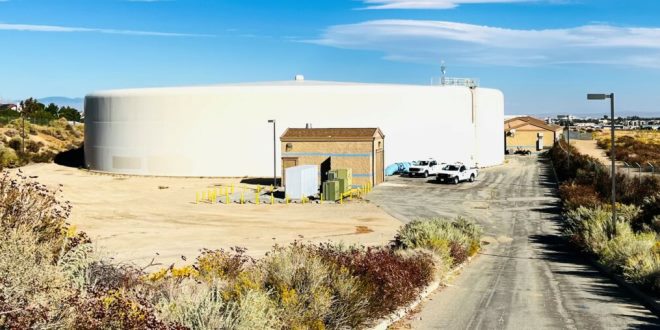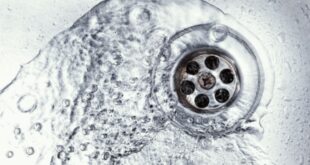After a month offline for baffle curtain removal and cleaning and disinfecting, Palmdale Water District (PWD) has announced work is complete and the 6-million-gallon clearwell has returned to service.
The clearwell on Avenue S, known as the 6M, is PWD’s primary water storage tank. It was fully disinfected before being refilled following the maintenance. The water was tested for contaminants over a four-day period before it was once again allowed to flow to homes and businesses.
“The District is pleased to have the 6M thoroughly cleaned and back to serving our customers,” said PWD General Manager Dennis D. LaMoreaux. “We want to reassure everyone that all the baffle curtains were removed, and the tank was completely cleaned of debris. To accomplish this complicated task, we had to shut down the 6M and adjust our water distribution plan. We thank everyone for their patience and understanding.”
The 6M was taken offline in late October so that commercial divers specializing in water tank cleaning could enter to cut down the 30-foot-tall hanging baffle curtains that were deteriorating. Their work was followed by PWD staff draining the water into the area’s detention basin before vacuuming and cleaning debris from the tank floor. The final step was spraying a heavy dose of chlorine to disinfect the entire tank.
The baffle curtains, installed in the late 1990s, were removed at the request of the State Water Resources Control Board, Division of Drinking Water after debris that included pieces of the curtain was found in water being flushed from a transmission main. The curtains in the 6M, which is where treated water is stored before distribution, increased contact time for chlorinetreated water by creating a longer flow path within the tank. It improved water treatment performance. Without the curtains, the 6M is operating with additional controls to get the same performance until new baffle curtains are installed.
The discarded curtains were made of Hypalon, which does not dissolve and is safe to be in contact with drinking water, per the National Science Foundation.
 California Water News Daily Your Source For Water News in California
California Water News Daily Your Source For Water News in California


